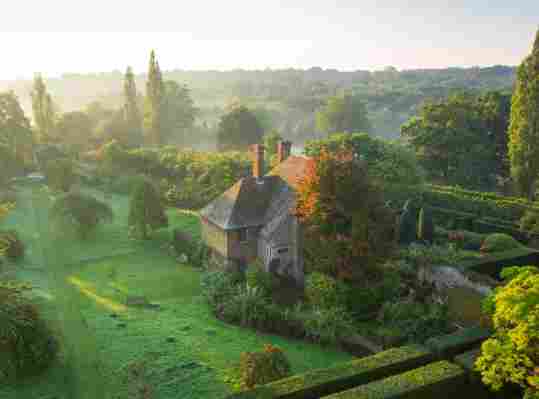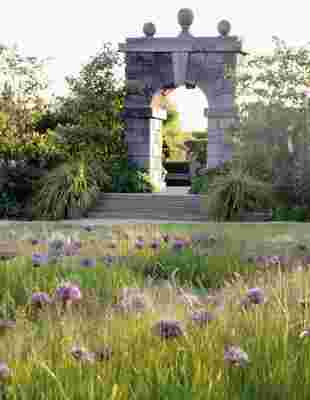7 of England’s Most Amazing Gardens
The idea cropped up in the depths of winter, at a dinner gathering hosted by my Connecticut neighbor Bunny Williams . It was time to see great English gardens again, and wouldn’t it be fun to see them together? With a weeklong July journey in mind, Bunny, writer Jane Garmey, and I set about plotting our route, with stops at places old and new. Jane sought out experts such as New York Botanical Garden president Gregory Long to advise us on what to explore, while I called on designers and friends to open their gates. We were to be eight in all, seven of us serious gardeners, the eighth my treasured stepdaughter Marie-Elisabeth Offierski, a professional tour guide, who handled the nuts and bolts—the small bus, our accommodations, the timing of it all.
As Bunny recently reminisced, “The exciting thing was to visit places we’d been to decades ago, then go to contemporary gardens that opened up new sections of our brains.” In Kent, Sissinghurst, created by Vita Sackville-West in the 1930s, unexpectedly astonished us with its enduring romance—views of the old tower, cottage, and brick walls juxtaposed against great tepees of fragrant sweet pea in purple and scarlet, muddled blooms of Vita’s ramblers and old shrub roses, and towering brown foxgloves and yellow mullein. At Great Dixter, in East Sussex, I fell in love with the entrance all over again, walking down the path, through meadow grass, to that ancient timber-framed house. Self-seeders, like Miss Willmott’s Ghost, romped through the flower beds. The playful spirit of Christopher Lloyd, always ready to shake up staid notions of color and plant combinations, remained very much in evidence at his erstwhile estate, tended to now by a devoted crew of young gardeners.
In contrast, at Hampshire’s 17th-century house the Holt, contemporary landscape architect Kim Wilkie has transformed a steep and awkward slope into a grass amphitheater that is the essence of simplicity—powerful and peaceful at the same time. (“In a modern way, it fit the place and enhanced the house,” Bunny said.)



We were similarly blown away by the Collector Earl’s Garden at Arundel Castle, in West Sussex, for which designers Isabel and Julian Bannerman, commissioned by the Duke and Duchess of Norfolk, turned a parking lot into a formal fantasy of temples, piers, obelisks, and urns, all carved out of green oak. You had to touch one to realize it wasn’t stone, and I could tell Bunny’s mind was working overtime to think where she might build a temple like this lighthearted tribute to a former earl. Other stops included Piet Oudolf’s great swaths of perennials at the gallery Hauser & Wirth Somerset and the famous mirrored borders at Bramdean House in Hampshire.
The garden that most inspired us was Folly Farm in West Berkshire, where landscape designer Dan Pearson has brought a 21st-century aesthetic to Edwin Lutyens’s Arts and Crafts masterpiece, recently revitalized by new owners with extraordinary care and love. Dan softened the brilliant stonework around the house with perennials, annuals, and shrubs in ravishing arrays—a haze of purples and whites in the parterre garden, hot-color drama in the sunken pool garden, stripes of yellow centaurea and lavender in the kitchen garden. He added meadowland, a pond, and a wind garden of grasses as an approach to the house, knitting the grounds with the surrounding countryside.
“Quite the best garden party I’ve ever been to,” remarked Jane as we made our good-byes at the end of the trip. We came home ready to acknowledge the serenity of green, consider a wooden obelisk, grow more sweet pea, enjoy self-seeders, and attempt some of Dan’s lovely plant combinations.